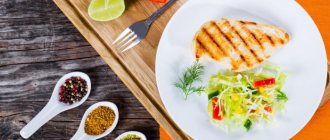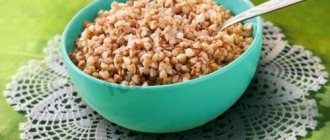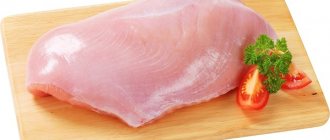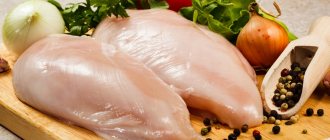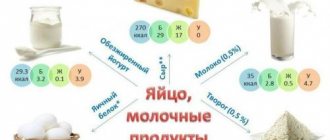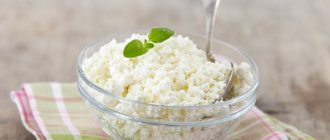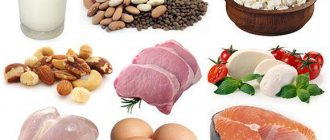Protein as the basis for growth
The benefits of protein products are difficult to overestimate. This is an essential part of nutrition, without which the body is unable to develop or grow. The incoming protein is used to renew old cells and form new ones. It takes an active part in metabolic processes, helps muscles grow, and promotes fat burning.
Protein is found in many foods, including eggs, cottage cheese, fish, and meat. We must not forget about plant sources - nuts, legumes, soy and others. Knowing how much protein is in chicken breast and other products, it is easier for an athlete to create the right diet and achieve their goals.
Nutritional value of athletes
This category is especially concerned with the question of how much protein is contained in chicken breast.
After all, it is protein in the form of protein and amino acids that most strongly influences the growth and quality structure of an athlete’s muscle fibers.
The reference literature answers this question with utmost clarity.
100 g of chicken breast contains about 24-25 g of protein.
It is this component that makes it possible for the body to receive about 190-200 Kcal.
The optimal norm in the daily diet of athletes is considered to be 200-250 g of such meat.
This amount of meat is usually divided into two portions.
Due to its easy digestibility, chicken meat can be consumed without fear of gaining extra pounds in the evening.
Doctors, chefs and nutritionists classify this meat as white meat.
The main characteristic of this type of meat is that it contains more protein compared to red meat, and, on the contrary, less fat.
Red meat includes beef, pork, lamb and rabbit.
Chicken meat contains even less fat.
The meat of two-month-old chickens of some breeds contains no more than 3% fat of the total weight.
The chemical composition of breast includes many organic chemical compounds.
The dominant components in chicken meat are: water, proteins and fats.
The relationship between them is as follows:
- water about 60%;
- protein about 25%;
- fats about 8%;
- The remaining 7-9% consists of amino acids and protein compounds, collagen and elastin.
When supporters of a strict vegetarian diet claim that modern humanity is quite capable of doing without animal protein and fats by replacing them with products of plant origin, they do not take into account that the main nutritional value of meat products is in amino acids.
These chemical compounds found in plant foods are not equivalent substitutes for the exact same compounds found in meat and fish.
The nutritional value
The first thing worth noting is the low calorie content of this meat. 100 grams of chicken breast contain 113 kcal , of which only 1.9 grams are fat, 23.6 grams are protein, 0.4 grams are carbohydrates.
The minimum amount of protein a person needs is 50-100 grams (based on 0.8-1 grams per 1 kilogram of weight). Therefore, 200-400 grams of breasts are enough to avoid a deficiency. For athletes who need 2-2.5 g of protein per kilogram of weight, this volume is not enough, but the remaining needs can be covered by other products or sports nutrition.
Knowing how much protein is in boiled chicken breast, it’s easier to think through your diet and achieve your goals. Such a product should be part of the diet of people who aim to “get lean,” that is, reduce the amount of fat without harming the muscles.
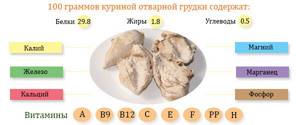
How does the protein content change depending on the method of cooking meat? Here the trend is as follows:
- when cooked, brisket contains 29.8 grams of protein (per 100 grams);
- during the frying , the volume of the useful element does not decrease and remains approximately at the same level;
- steaming 23.6 grams enters the body ;
- smoking reduces the volume of incoming useful elements to the level of 19.7 g .
Now you know how much protein is in chicken. The only question is why its level in a raw product is lower than in one already prepared by cooking. This is easy to explain - raw meat contains 15-20 percent water, which is lost during the cooking process. Thus, a piece of breast that weighed 100 g before processing turns into 70-80 grams. It is logical that the protein content in chicken becomes higher after cooking.
How much protein is in chicken breast
A balanced diet is one that contains foods with a certain amount of proteins, fats and carbohydrates. These components allow the body to fully exist. Moreover, the content of these substances must be regulated, and deviation from the norms can often lead to various negative consequences.
The most balanced product is chicken breast . The content of fat and protein in breast fillet is so balanced that it is almost the most healthy and dietary product. The most worthy of attention are the proteins that the breast is rich in.
So what is protein? This is a chemical compound of alpha amino acids, which at a high molecular level are connected to each other by a special bond - a peptide bond. The human body cannot synthesize all amino acids, so they come from high-protein foods. And they, in turn, give people energy. The entire life activity of a person depends on the amount of proteins in the body. It is intensively involved in metabolism, in the creation of new cells that will replace old ones. The healthiest foods rich in protein are meat, cottage cheese, fish, as well as legumes and nuts.
Chemical composition of chicken breast and its nutritional value
So what is in chicken fillet and how much protein is in chicken breast? And also why, despite some dryness, is it contained in almost all existing diets?
It is very important to understand that the most dietary part of chicken is the breast , so this meat is considered the healthiest in any form. How much protein does it contain, in different versions?
- 100 g of raw breast - 23 grams;
- 100 g of boiled or fried chicken fillet - 28 grams;
- 100 g of smoked chicken breast contains 18 grams of protein.
It is known that for normal existence a person requires 80 grams of protein per day . It follows from this that by eating only one chicken breast (and since one kg of fillet contains 3 pieces, the weight of one is only 300-350 g), prepared in any way, you can provide yourself with a sufficient supply of protein for the whole day. It is best to divide the required amount into 2-3 doses so that the protein enters the body in even portions throughout the day.
It is important to say that the fat content in this type of meat is minimal - only 1.9 g per 100 grams, and carbohydrates - 0.4 g. The total calorie content of this product in its raw form is 110 kcal per 100 g of product.
Boiled chicken breast is very useful to eat all day, combining with various carbohydrates to obtain more energy for the body. But in the evening you need to use it only once, then it will not harm your figure.
Content of vitamins and minerals in chicken fillet
This meat is very healthy not only because of how much protein and fat it contains. It is also very rich in minerals and vitamins that are beneficial for the human body. So, the composition of white chicken meat includes:
- vitamins A, PP;
- a large amount of B vitamins;
- phosphorus;
- potassium;
- iron;
- zinc;
- sulfur;
- magnesium, etc.
Therefore, by eating breast, we also receive substances that help maintain and strengthen the immune system. Accordingly, by receiving the necessary micro- and macroelements, you can lose weight or gain it more effectively. It also contains choline (vitamin B4). It helps cleanse the liver of fats and has a beneficial effect on the functioning of the kidneys and adrenal glands.
Methods for preparing chicken breast
The best cooking method for healthier and more dietary nutrition is steaming or in a pan . With this, you can save more useful elements. Another way that is good for health is and will always be baking the product in foil on the oven rack. And boiled - in this method it turns out very tender and juicy.
It is very useful to eat breast meat in combination with foods containing a lot of dietary fiber. Therefore, very often various salads and snacks with fresh vegetables and fruits are prepared from white chicken meat. Their preparation does not take much time, but at the same time it is complete and dietary.
Another popular way to cook chicken is stewing . The meat turns out tender and tasty.
Frying fillets as part of a dietary diet is not recommended. But even cooked in this form, it will be low in calories and worthy of attention.
It must be remembered that the beneficial properties of fillet are only suitable for meat without skin and bones. With them, its nutritional value and calorie content can change greatly.
For example, here is a recipe for stewing chicken breast in a slow cooker . It is necessary to cut it into small pieces measuring 1 by 1 cm. Place the meat in a multicooker bowl, add salt, season with spices and pour in a small amount of sour cream diluted with water. And put it on the “Extinguishing” mode for 40 minutes. Chicken breast cooked this way will be very juicy and soft.
Information about how much protein is in this type of meat is very useful and will always help you use all the beneficial properties of chicken fillet very rationally. With its help, you can more correctly and effectively approach family nutrition planning.
Benefit
Experts agree that animal protein is the most beneficial for the body. It comes along with carbohydrates and fats, forming the basis of an athlete’s proper diet. It has already been proven that such protein guarantees the correct flow of metabolic processes and accelerates muscle growth.
The available amount of protein in chicken breast at least partially covers the body's needs for building material. At the same time, the product is not used as a source of energy, because it has a low energy value. In addition to protein, it also contains other elements, but in low quantities. How many carbs are in chicken breast? The boiled product contains only 0.5 g of carbohydrates and 1.8 g of fat , which is not enough to cover the energy deficit. But this is not necessary, because boiled chicken is a dietary product, considered a source of building material, not energy.
How much protein is in different parts of chicken?
Chicken is one of the most commonly consumed meat products around the world. It is especially popular among weight watchers because it is an excellent source of protein. Products containing high levels of protein are indispensable aids in building muscle mass and losing weight.
However, chicken comes in a variety of cuts, including breasts, thighs, wings, and drumsticks. These parts contain different amounts of protein, fat and calories, so each of them has its own purpose.
In this article, I'll talk about how much protein is found in different parts of a chicken, including the breast, thighs, wings, and drumsticks.
Chicken breast
The breast is one of the most popular parts of chicken.
Chicken breast cooked without skin contains: 31 grams of protein and 165 calories per 100 grams of product. 80% of calories come from protein and 20% from fat.
Chicken breast is especially popular among bodybuilders and those who want to lose weight. Its high protein level and low calorie content means you can eat it in large quantities without fear of gaining excess fat.
One chicken breast contains on average 54 grams of protein and 284 calories.
Chicken thigh
A cooked, skinless, boneless thigh contains 26 grams of protein and 209 calories per 100 grams of product. 53% of calories come from protein and 47% from fat.
Interestingly, chicken thighs are a slightly darker color than chicken breasts. This is because chicken legs are more active and contain more myoglobin. It helps provide oxygen to active muscles and also makes them darker.
Some people believe that the dark color of chicken thighs gives them a juicier flavor.
One chicken thigh contains 13.5 grams of protein and 109 calories on average.
Shin
One skinless, boneless chicken drumstick contains 28.3 grams of protein and 172 calories per 100 grams of product. 70% of calories come from protein and 30% from fat.
One skinless chicken drumstick contains on average 12.4 grams of protein and 76 calories.
Most people eat drumsticks with the skin on. A drumstick with skin contains an average of 112 calories. 53% of calories come from protein and 47% from fat
Chicken wing
One skinless, boneless chicken wing contains 30.5 grams of protein and 203 calories per 100 grams of product. 64% of calories come from protein and 36% from fat.
One skinless chicken wing averages 6.4 grams of protein and 42 calories.
As with drumsticks, most people eat chicken wings with the skin on. A chicken wing with skin contains 99 calories. 39% of calories come from protein and 61% from fat
What part of chicken should you eat for maximum benefits?
The cut of chicken you choose for your meal depends on your health and fitness goals.
While all parts of chicken are excellent sources of protein, some have less than others. Extra fat in the thigh, leg, and wings may benefit some goals but hinder others.
If you are trying to lose weight, then chicken breast is the best choice for you. This part contains fewer calories and more protein.
People who want to maintain their muscle mass also benefit from eating chicken breast. It contains a high amount of protein, which is the most important factor when it comes to choosing which part of the chicken to eat. For example, chicken breast is ideal for people involved in bodybuilding.
However, people who follow low-carb diets may benefit from eating the fattier parts of chicken, as they need more fat in their diet.
If your goal is to build muscle and gain weight, you need to eat more calories than your body burns. People who fall into this group may benefit from eating fattier parts of chicken as they contain more calories.
And a little about secrets...
The story of one of our readers, Inga Eremina:
I was especially depressed by my weight; at 41, I weighed as much as 3 sumo wrestlers combined, namely 92 kg. How to completely lose excess weight? How to cope with hormonal changes and obesity? But nothing disfigures or makes a person look younger than his figure.
Contents:
Why is white chicken meat so beneficial and who should take it? Calorie content, protein, carbohydrates and fat content in it. For an athlete, proper nutrition is considered one of the main criteria for success. It is important to include in your diet foods that avoid saturation with fats and fast carbohydrates, but at the same time provide a sufficient amount of protein. Chicken breast is an ideal option, containing a minimal amount of fat, and the amount of protein is sufficient to cover most of the muscle building material needs. This product is great for people who are looking to gain lean muscle mass, lose weight, or maintain weight.
But how much protein is in chicken breast? What benefits does it have for the body?
Chicken fillet - calorie content, beneficial properties, benefits and harms, description
Calories, kcal:
110 Carbohydrates, g: 0.0
Chicken fillet usually refers to the white meat of a chicken breast, removed from the skin, cartilage and bones. Chicken fillet is considered the most dietary meat of all chicken, due to the least amount of fat and dietary fiber (calorizator). Fresh chicken fillet has a brick-pink color, a pleasant smell of chicken meat, and the taste of cooked fillet is neutral.
Calorie content of chicken fillet
The calorie content of chicken fillet is 110 kcal per 100 grams of product.
Composition and beneficial properties of chicken fillet
Chicken fillet is the record holder for the content of easily digestible animal protein, which is necessary not only for muscles, but also for the entire body as a whole for the construction of cells. The product contains B vitamins, especially a lot of B2, as well as iron, which maintains high levels of hemoglobin in the blood. Compared, for example, with chicken drumsticks, chicken fillet has four times less fat, so the product is excellent for dietary and fasting meals. For stomach diseases, it is recommended to eat boiled chicken fillet, because it has the shortest digestion time.
Harm of chicken fillet
In rare cases, chicken fillet can cause allergic reactions, especially if the fillet is cooked in a frying pan.
Chicken fillet for weight loss
Boiled chicken fillet is one of the main ingredients of many diets, especially for athletes who are building muscle mass or are in a “cutting” period. For anyone who wants to keep their weight under control, a fasting day on chicken meat is suitable.
Selection and storage of chicken fillet
Chicken fillet is offered in several versions - chilled or frozen. Preferable, of course, is a chilled fillet, the freshness of which is checked visually - the color of the chicken meat should be uniform and not too bright, tactilely - when you press on the surface of the fillet, the indentation should quickly disappear, otherwise you will see a defrosted fillet. An unpleasant odor is also a reason for refusing to purchase a product. When purchasing frozen chicken fillet, you should give preference to small packages containing one or two pieces, and you need to make sure that there is no layer of ice on the surface of the product.
Chicken fillet in cooking
Chicken fillet is one of the universal products that can be prepared in various ways - boiled, fried, stewed, baked, grilled or smoked. Chicken fillet is used to prepare minced meat for making cutlets or casseroles; you can finely chop the fillet, add seasonings, egg and mayonnaise (any sauce to taste), onions and a little flour, mix and fry in the form of pancakes. Steamed broccoli and cauliflower, green salad or rice are traditionally considered ideal companions for chicken.
For more information about chicken meat and its benefits, watch the video clip of the TV show “Live Healthy.”
Especially for Calorizator.ru Copying this article in whole or in part is prohibited.
Easy and simple preparation of chicken breast
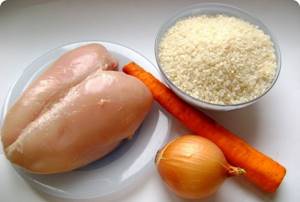
Poultry meat is subjected to all types of heat treatment during the cooking process:
- frying;
- cooking;
- stewing;
- cooking in the oven.
The first method is considered the easiest way to cook chicken breast.
Before frying the chicken breast, you don’t even need to pound it.
Fry for about 4 minutes on each side, after adding salt and pepper.
It will take a little more time to cook and stew the breast.
Meat is boiled mainly in order to then include it as a component in salads.
How to cook celery and what you need for it.
If you prefer to eat healthy, this article will suit you. A must read.
It is known that banana is a high-calorie product, but what else do you know about it? Read further: https://notefood.ru/produkty/kalorijnost-produktov/kakaya-kaloriynost-banana.html
The most famous of them is Olivier and Caesar.
Boil the breasts for about 30 minutes.
Stew chicken meat with vegetables.
It is according to this recipe that a traditional roast chicken called satsivi is prepared, at the end adding a sauce of garlic, walnuts, herbs and cream to the dish.
The preparation process for this dish will take no more than 35-40 minutes.
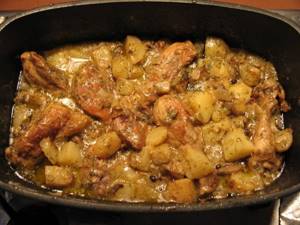
Recipes look much richer and more interesting when the brisket is baked in the oven.
how much protein is in chicken breast
There is no doubt that our body needs protein like air. This is what every cell consists of. Without protein, muscle growth will not occur, since they simply will not have the building material for this, which is why it is so important for children. But adults should not forget about a proper diet. Our body renews itself every day, and for this, the cells consume protein, which must be supplied with food every day.
Best Source of Protein
There is still fierce debate about this. Some argue that it is imperative to consume animal products and provide figures as proof of how much protein is in beef. A significant part of bodybuilders eat specially selected meat and fish products. Others, on the contrary, believe that meat can be eaten only once or twice a week, and even then in small portions. Let's try to find out today which product is most suitable for replenishing protein reserves in the body.
Briefly about the main thing
Nuts, grains, legumes - they all contain a certain amount of protein. This is precisely what all vegetarian menu theories focus on. However, a plant and a living organism are very different from each other. It is logical to assume that this fact will play a leading role. After all, all products that come from animals have a fibrous structure. This makes sense since meat is muscle tissue. Accordingly, by eating the muscles of another creature, we thereby nourish our own.
But the meat of certain animals is not the same in terms of enriching our body with protein. The tougher the product, the less protein you can get from it. Therefore, wild meat is a delicacy, but not a priority. It’s not for nothing that today we decided to find out how much protein is in beef. This type of meat is the most common, it is always on sale, and it is not difficult to prepare.
Beef is the meat of cattle that are specially farmed for slaughter. Quality depends on a large number of factors: age and type of feed, content and sex of the animal. Even if we consider the carcass of one animal, the meat on it will not be the same. Those where the strongest muscles are located will be the toughest. Accordingly, when talking about how much protein is in beef, it must be understood that the body still has to extract and absorb it.
The most valuable are the dorsal and thoracic parts obtained from immature bulls and heifers. This high-quality meat is pink in color, has a pleasant smell and a delicate fibrous structure. But there should be practically no fat or films in it. These parameters do not affect how much protein is in beef, but they largely determine the degree of its absorption by the body.
Calorie content
This point is directly related to the topic of our body. A high content of refractory fats is a risk factor as it increases blood cholesterol levels. This is the problem with lamb, which is not recommended to be eaten too often. It should be noted that if you are offered a piece of beef with a good layer of yellow fat, it means that it is a fairly old animal. It will take up to three hours to boil it until tender. As a result, it will be difficult to calculate how many grams of protein are in beef, since the protein is partially destroyed during heat treatment.
Young tender meat, especially steamed in the form of cutlets, is completely free of any shortcomings. This is the lowest calorie product with minimal fat content. For every 100 g there are approximately 187 kcal. This is relatively little, so this product can be consumed in moderation even by people who suffer from obesity.
The nutritional value
If we compare how much protein is in 100 beef and other types of meat, it turns out that the first comes out as the absolute leader. No other source will provide the same amount. So, a small piece contains 21-25 g of pure protein. For comparison, pork and lamb contain only 15 g/100 g of finished product. The content in the beloved tuna, herring and trout will be similar.
But that’s not all that can please you. Even knowing how much protein is in 100 grams of beef, it’s a good idea to study what you get besides it. Together with protein, you get 315-334 mg of potassium, 60 mg of sodium, 9 mg of calcium, 21 mg of magnesium, 198 mg of phosphorus, 2.6 mg of iron. This is not counting B vitamins. Collagen and elastin proteins occupy 2.6% of the total mass of the product.
Beneficial features
No other product provides your body with as much healthy protein as the protein in 100 g of beef. This is the main supplier in our modern realities. When cooking young meat, no more than 2% of protein is lost. Everything else is used by the body almost completely. To make this process even better, the softest part of the carcass is used. Regular consumption of this meat helps cope with fatigue. Beef is very useful for iron deficiency anemia. And those with high cholesterol are prescribed a diet with daily consumption of boiled red meat. In this case, in a few weeks the indicators decrease by 20%, which is an excellent result.
How much meat should you eat
Amount of protein in chicken fillet
So, how much protein is there in 100 grams of chicken breast? It is known that 80 grams of proteins are sufficient . Chicken breast contains them differently depending on the cooking method:
- fresh breast contains 23 grams of protein per 100 grams of product;
- the content of this component in boiled or fried breast is 28 grams;
- the amount of protein in smoked chicken fillet is reduced to 18 grams.
And the protein content in steamed breast is similar to that of the raw product.
We are convinced that the amount of protein in chicken fillet directly depends on how exactly you prepare it. This is explained by the fact that during cooking, meat loses about 20 percent of water . Accordingly, in boiled meat there will be more protein per 100 grams, since weight is lost.
In order to provide yourself with the daily protein requirement, you will need to eat about 300 grams of boiled chicken breast, it is better to do this in 2 doses. White chicken meat is digested very quickly and well, is perfectly absorbed and does not cause weight gain. You can eat boiled breast even in the evening and not be afraid for your figure.
But remember that chicken breast provides very little energy, so if you eat it without anything, you will experience a loss of strength over time. It is recommended to diversify the protein menu with foods containing carbohydrates:
- freshly squeezed juices;
- vegetables;
- fruits.
How much protein is in chicken breast
Chicken breast is a popular dietary product because it has very low calorie content and an optimal ratio of proteins, fats and carbohydrates. However, the method of preparing meat is of no small importance, since when using different methods, the number of calories in this dish and its qualitative composition can vary significantly. To follow the principles of a healthy diet, you need to know what kind of cooking of chicken breast is optimal to preserve healthy protein and low calorie content.
1
Protein content of chicken breast
Raw chicken contains about 23.5 g of protein (B) per 100 grams of product. This figure is directly dependent on the quality of the raw materials. Cheaper birds are injected at factories with special compounds that increase the weight of the product due to the injected liquid. In this case, the B content per unit of unprocessed white meat is reduced.
However, meat is rarely eaten raw, so it is much more important to know the amount of B in the finished brisket. It differs slightly depending on the cooking method. The approximate content of B in chicken breast per 100 g is presented in the table:
| Method of cooking chicken | Content B per 100 g of finished product |
| Boiled | 27,5 |
| Smoked | 24,5 |
| Steamed | 23,5 |
| Fried | 25,0 |
| Baked | 26,0 |
From the table above it follows that boiled chicken fillet is the richest. This is due to the fact that part of the liquid present in raw chicken goes into the broth during the cooking process. The amount of B in the bird itself does not change in any way (the mass does not increase, it is not destroyed during cooking). Therefore, a steamed dish contains the same volume of B as raw chicken.
2
Why do you need to calculate the amount of protein in chicken?
Knowledge of the amount of proteins contained in chicken breast is necessary for people who want to lose weight, as well as “cut”, that is, reduce fat mass without sacrificing muscle mass.
A balanced human diet contains about 50% carbohydrates, 30% proteins, 20% fats. If it is necessary to lose weight due to the fat component, this ratio should shift in favor of B and look like this:
- proteins - 45%;
- fats - 15-20%;
- carbohydrates - 35-40%.
Therefore, it is important to give preference to products containing large amounts of B, for example, chicken in any form.
But when following a diet, you should remember not only the B content, but also the fat in the meat and its total calorie content. Optimal ways to cook chicken for losing weight:
- boiling;
- baking;
- steaming.
Smoking and frying make chicken meat fattier and higher in calories. Such dishes contain many carcinogens, so they are harmful even for a person of normal weight.
Before you start cooking the chicken, you need to remove the skin. This part is very fatty and high in calories, so it is not suitable for dietary nutrition.
Chicken breast composition
Chicken breast is a wonderful source of vitamins and minerals. Their importance lies in the fact that vitamins are involved in all processes occurring in the human body. Vitamins act as a catalyst for processes such as protein synthesis and many others. That is, without the required amount of micro and macroelements entering the body, we will not be able to effectively lose weight or build muscle mass. In addition, vitamins support human immunity, which is important during intense physical activity.
Chicken breast contains almost all B vitamins, vitamins A, C, PP. And it contains choline - it ensures the normal functioning of the kidneys and adrenal glands, and also helps cleanse the liver of fats. It also contains a large amount of potassium, which regulates blood pressure and acts as electrolytes, facilitating the transmission of nerve impulses. Chicken breast is also rich in macro- and microelements such as magnesium, sodium, iron, sulfur, phosphorus, chlorine and other elements important for full human life.
Chemical composition of chicken fillet
The table shows the nutritional content (calories, proteins, fats, carbohydrates, vitamins and minerals) per 100 grams of product.
Chicken breast (fillet) contains vitamins and minerals: vitamin B3 – 16%, vitamin B6 – 25%, vitamin B12 – 20%, vitamin H – 20%, vitamin PP – 53.6%, choline – 15.2 %, magnesium – 21.5%, phosphorus – 21.4%, sulfur – 18.6%, zinc – 17.1%, chromium – 18%, cobalt – 120%.
, where % is the percentage of satisfaction of the daily norm per 100 g.
Nutrient balance of chicken fillet
| The nutritional value | |
| Calorie content | 113 kcal |
| Squirrels | 23.6 g |
| Fats | 1.9 g |
| Carbohydrates | 0.4 g |
| Water | 73 g |
| Ash | 1.1 g |
| Vitamins | |
| Vitamin PP | 10.9 mg |
| Vitamin A (VE) | 70 mcg |
| Vitamin B1 (thiamine) | 0.07 mg |
| Vitamin B2 (riboflavin) | 0.07 mg |
| Vitamin B5 (pantothenic) | 0.8 mg |
| Vitamin B6 (pyridoxine) | 0.5 mg |
| Vitamin B9 (folate) | 4.3 mcg |
| Vitamin B12 (cobalamins) | 0.6 mcg |
| Vitamin C | 1.8 mg |
| Vitamin E (TE) | 0.2 mg |
| Vitamin H (biotin) | 10 mcg |
| Vitamin PP (Niacin Equivalent) | 10.7212 mg |
| Kholin | 76 mg |
| Macronutrients | |
| Calcium | 8 mg |
| Magnesium | 86 mg |
| Sodium | 60 mg |
| Potassium | 292 mg |
| Phosphorus | 171 mg |
| Chlorine | 77 mg |
| Sulfur | 186 mg |
| Microelements | |
| Iron | 1.4 mg |
| Zinc | 2.055 mg |
| Iodine | 6 mcg |
| Copper | 76 mcg |
| Manganese | 0.019 mg |
| Chromium | 9 mcg |
| Fluorine | 130 mcg |
| Cobalt | 12 mcg |
How much protein is in chicken breast per 100 grams: healthy recipes, table of fats and carbohydrates
Proteins as the basis for growth and vital activity
Protein is the building block of the human body. Thanks to amino acids, muscles grow and energy and hormonal metabolism occurs.
For a productive life, the body needs more than 30 amino acids. 22 of them are replaceable; the body synthesizes them on its own. Essential amino acids are not produced in the body, so they must be obtained from food. Meat, fish and dairy foods are the main suppliers of protein.
The most dietary product is white meat. When compiling a diet, you need to calculate how much protein is in the chicken breast and other parts of the carcass.
Content of proteins, fats and carbohydrates in chicken breast per 100 grams
When calculating the diet, energy value and macronutrient composition are taken into account.
A person’s need for amino acids depends on:
- gender,
- age,
- health conditions,
- level and frequency of physical activity.
The uniqueness of white fillet lies in its balanced BJU and chemical composition.
Low lipid content, almost complete absence of carbohydrates, low calorie content and a record percentage of essential amino acids allow breast meat to be used in nutrition for various purposes, be it muscle growth or a fat-burning diet.
To calculate daily consumption, weigh the portions, determine the body's needs based on the quantitative composition of nutrients and the balance of macronutrients per 100 g of breast:
- the energy value of a steamed dish is 114 kcal,
- proteins – 24 g,
- fats – 2 g,
- carbohydrates – 0.1 g.
The average daily protein requirement can be met by consuming 80 g of pure protein. 300 g of meat will completely cover the needs of the human body with average activity.
Athletes and people involved in heavy physical labor should calculate the norm individually, depending on the level of stress.
Calorie content and nutritional value of chicken breast with skin
The main amount of fat in poultry is located under the skin. Nutritionists recommend eating cleaned fillets to reduce the intake of cholesterol contained in animal products into the blood and not exceed the daily energy requirement.
Compare the macronutrients and calories in skin-on chicken breast:
- The energy value of boiled fillet with skin is 147 kcal.
- proteins – 22.4 g,
- fats – 3.6 g
- carbohydrates – 0.2 g
With a slight decrease in proteins, the fat content almost doubled compared to skinless meat.
Taking into account the norm of fat consumption (1 g per 1 kg of weight for a person with a normal body mass index and weight 60 kg), 300 g of fillet with skin will cover only 1/6 of the lipid norm.
BJU in raw, boiled, smoked and fried chicken breast
Long-term nutrition programs or constant adherence to the principles of proper nutrition imply creating a menu of healthy and varied dishes. If you are tired of boiled chicken, you can fry or bake this product.
The calorie content and balance of BZHU will change, take this fact into account when selecting your diet.
| Method of preparation/KBJU | Raw | Boiled | Smoked | Fried |
| Calories, kcal | 137 | 113 | 117 | 162 |
| Amino acids, g | 24 | 28 | 18 | 25 |
| Lipids, g | 2 | 1.8 | 5 | 8 |
| Carbohydrates. G | 0.4 | 0.5 | 0.1 | 1.3 |
Raw meat contains more water, and when boiling and other cooking methods, the liquid evaporates, so the macronutrient content of cooked meals differs from raw meat.
To introduce carbohydrates and fiber into your diet, you can add vegetables to the steamer where the fillet is cooked 5 minutes before the meat is ready.
BJU in other parts of the chicken
To diversify the menu, you need to include all parts of the bird in your nutrition program. The thigh and drumstick contain more fat, which means their nutritional value is higher.
Chicken thigh
Depending on the method of heat treatment, it contains from 180 to 230 kcal, and the KBJU of a thigh baked with skin in foil is distributed as follows - 227/20/15/1.8 g per 100 g.
Chicken drumstick
Less caloric than thigh due to the large number of muscle fibers. A leg baked in the oven has the following KBJU indicators - 174/20/10/0.7 g per 100 g.
Chicken wing
This part of the bird contains little meat, it is difficult to remove the skin from the wing, so the caloric content and fat content of the wing is higher than other parts:
| Wings | Calorie content, kcal | Proteins, g | Fats, g | Carbohydrates, g |
| Baked in the oven | 249 | 21 | 16 | 4 |
| Smoked | 301 | 23 | 23 | 0.3 |
| Fried | 267 | 21 | 18 | 7 |
Those who are planning a diet for weight loss should not include wings in the menu; it is better to choose a more dietary product.
The value and components of chicken fillet
White chicken meat is easily digestible, contains all essential and 9 non-essential amino acids, as well as poly- and monounsaturated fatty acids.
The list of vitamins, micro- and macroelements allows you to include fillet for feeding children and people in need of rehabilitation after illness and surgery.
| Name | Quantity per 100 g |
| Vitamins | |
| Vitamin B1, thiamine | 0.07 mg |
| Vitamin B2, riboflavin | 0.07 mg |
| Vitamin RR, NE | 7.69 mg |
| Niacin | 10.9 mg |
| Macronutrients | |
| Potassium, K | 292 mg |
| Calcium, Ca | 8 mg |
| Magnesium, Mg | 86 mg |
| Sodium, Na | 60 mg |
| Phosphorus, Ph | 171 mg |
| Chlorine, Cl | 77 mg |
| Microelements | |
| Iron, Fe | 1.4 mg |
| Yod, I | 6 mcg |
| Cobalt, Co | 9 mcg |
| Manganese, Mn | 0.02 mg |
| Copper, Cu | 80 mcg |
| Molybdenum, Mo | 11 mcg |
| Fluorine, F | 130 mcg |
| Chromium, Cr | 25 mcg |
| Zinc, Zn | 1.3 mg |
Breast meat is a source of polyunsaturated fatty acids, but their percentage is negligible compared to the permissible daily intake. The amount of cholesterol per 100 g of product is only 10 mg, with a daily requirement of no more than 300 mg.
Supplement meat dishes with vegetables and herbs, choose a cooking method that meets your goals.
Protein content of similar products
For those who do not like chicken or suffer from allergies, you can include dietary and hypoallergenic turkey and rabbit dishes in your diet.
Nutritional value per 100 g:
| The product's name | Calories, kcal | Proteins, g | Fats, g | Carbohydrates, g |
| Boiled fillet without skin | 54 | 12.5 | 0.5 | 0.1 |
| Fillet in a steamer | 99 | 19.5 | 1.8 | 0.3 |
| Rabbit meat | 156 | 21 | 8 |
The calorie content of turkey is less than 100 kcal, and the content of lipids and carbohydrates is negligible. The calorie content of rabbit meat is higher, but the meat is easily digestible and contains vitamins B, C and a set of microelements such as potassium, fluorine, manganese and iron.
Create a diet based on your body’s needs and your goals.
